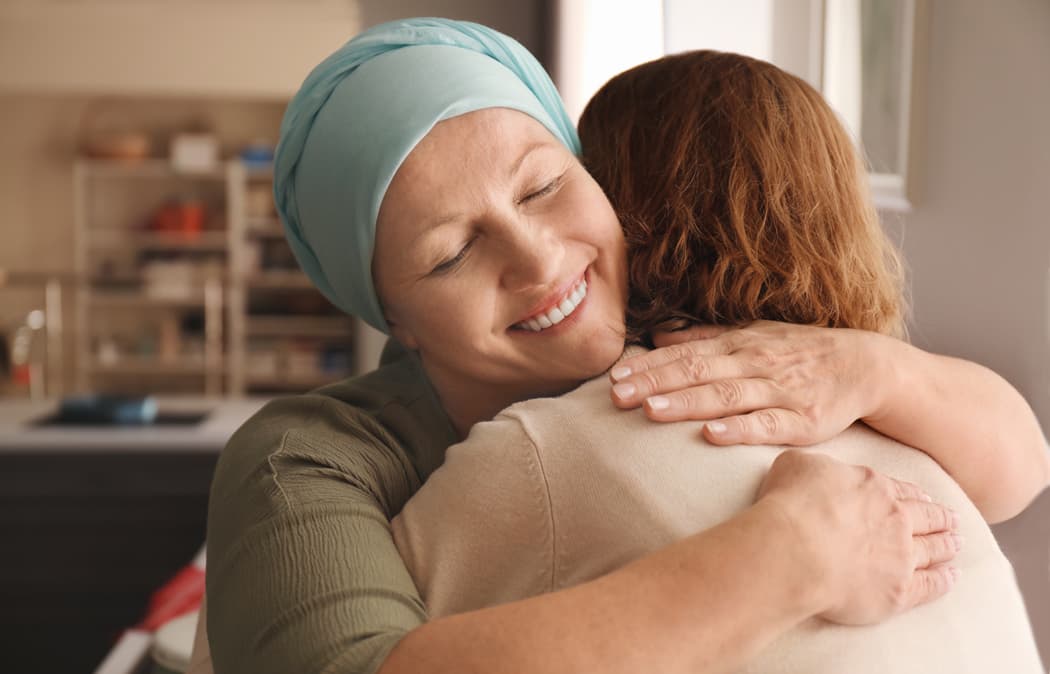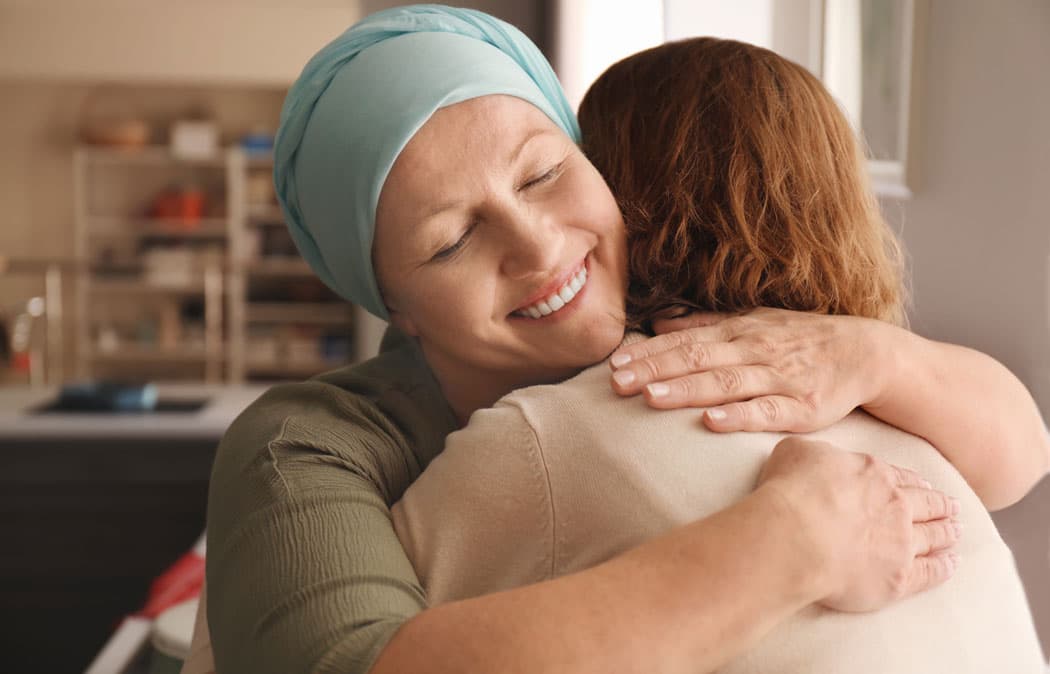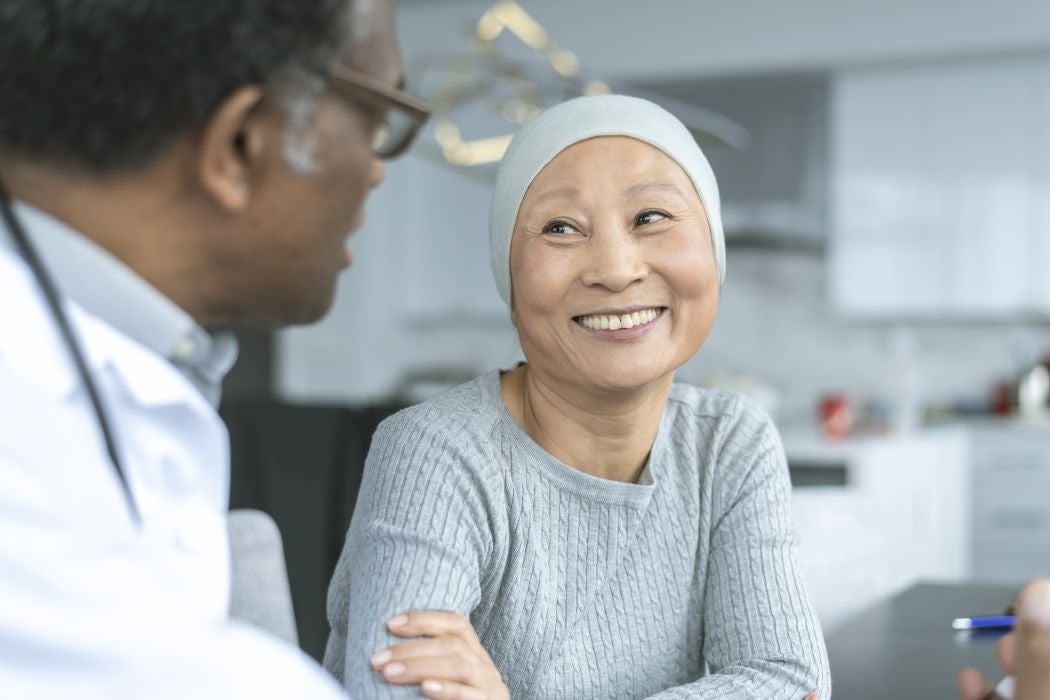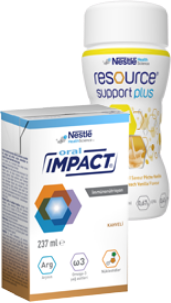Cancer Survivorship: Stages, Statistics, And Care

Thanks to advances in treatments and early detection, the number of cancer survivors has increased significantly in recent years. In 2019, the number of cancer survivors surpassed 16.9 million in the US 1. By 2030, that number is expected to rise to over 22.2 million 1.
You become a cancer survivor from the moment you receive a cancer diagnosis. In fact, the American Cancer Society uses the term “survivor” for anyone who has had or is living with cancer, no matter what stage of the journey they’re in.
In this article, we will be looking at what cancer survivorship is and what it means for you and your long-term health. We also look at the support available to help you on your road to recovery.
What is cancer survivorship?
“Cancer survivorship” means something different to every survivor, but it broadly encompasses a journey that begins when a patient has just been diagnosed, right the way through their treatment and beyond.
While some people find the term “cancer survivorship” empowering, others prefer not to use it. It is quite a subjective term and some people feel like they don’t want cancer to define their life. They may not want their health status to play such a big role in their identity. Others may already be living with long-term cancer and might not feel that the word “survivor” is right for them.
Everyone’s experience of cancer and cancer treatment is different. You may be feeling many new or difficult emotions, even if you are regaining your health and your treatment is coming to an end.
Some things that people feel as cancer survivors include 2:
- Anxiety about life after cancer treatment
- A greater sense of self-acceptance
- A new appreciation for life
- More worries about overall health
- Financial worries
- Difficulties adjusting to changes in work or relationships
Cancer co-survivors
You may have heard the term “cancer co-survivor.” This refers to any loved ones, such as a partner, children, friends, or family members supporting someone through cancer treatment.
The term “co-survivor” acknowledges the effect that cancer has had on the individual’s life, as well as their relationship with their surrounding friends and family.
Cancer survival statistics
The percentage of people who survive cancer varies widely depending not only on the type of cancer but also on individual factors such as age.
Overall, in the United States, the mortality rate for all cancers is 158.3 per 100,000 people 3. The mortality rate is slightly higher in men than in women, at 189.5 per 100,000 men and 135.7 per 100,000 women 3.
Part of this difference comes from the types of cancers that affect men and women. Women, for example, may be affected by cervical or breast cancer, which can often be diagnosed early during regular preventative screenings 4.
Hundreds of thousands of people survive cancer every year. In fact, there are 16.9 million cancer survivors in the US today 1, so the chances are high that you know someone who is also a cancer survivor.
Living with cancer
It can feel confusing, stressful, or frightening in the days and weeks following a cancer diagnosis. This is completely normal — you are learning to live with cancer, adjusting your life and schedule to a new routine that centers on getting better.
Depending on the type of cancer and its stage at diagnosis, your treatment can include one or a combination of 5:
- Surgery
- Chemotherapy
- Radiation
- Medication
You may need to take additional medications to deal with the side effects of the cancer treatments, rather than cancer itself. For example, chemotherapy can cause a loss of appetite, so you may need to take additional medications or adapt your nutritional intake with a high-calorie supplement to cover your nutritional needs.
Chemotherapy, radiation, and certain medications can make it difficult for you to eat well and stay active 6. As such, it’s important that you rest and take a doctor’s advice about the best way to stay healthy during this time.
If you’re struggling to maintain a healthy diet, explore our cancer nutrition hub for all the latest tips and tricks on what to eat and how to stay as healthy as possible.
Living through cancer
After you have finished treatment, you may still feel unwell and anxious. You might be afraid of cancer coming back, or might still be experiencing the side effects of chemotherapy or radiation. Regaining your strength and building your physical and emotional health can help during this transition phase 7.
You can read more about keeping healthy during cancer and treatment in our diet and nutrition articles below:
- Battling cancer with nutrition and diet
- Healthy food for cancer patients
- Eating well for breast cancer
- Lung cancer diet and nutrition tips
- Diet tips for patients battling prostate cancer
The risk of cancer recurring depends on the type of cancer and the body’s response to treatment 8.
Your doctor talks to you about your risk levels to help alleviate your fears and uncertainty about the future. They will likely make a schedule of regular check-ups to ensure that cancer stays dormant (meaning cells cease multiplying but remain in an inactive state) 9 or in complete remission (meaning your cancer has disappeared, although isn’t necessarily cured) 10.
Living beyond cancer
Long-term cancer survivorship brings its own challenges. Many cancer survivors find that life returns to normal and they return to their regular jobs, routines, and social life. Yet, you may also face physical, psychological, and financial difficulties.
You may also be adjusting your lifestyle to prioritize your health and try to minimize the risk of cancer and other illnesses in the future. Below we have included tips on how to maintain a healthy lifestyle after cancer.
How to keep healthy as a cancer survivor
There are many things you can do to take care of your body and mental health at every stage of cancer survivorship, such as:
- Eating a healthy, balanced diet
- Getting active again by adding plenty of regular movement or exercise into your day
- Following your check-up schedule
- Prioritizing social relationships and your mental health
- Creating a survivorship care plan
Cancer survivorship care plan
A cancer survivorship care plan can make it easier for you to maintain your health after cancer treatment 12. Your care plan can include:
- Medical records: Your doctor or care team can provide records of your diagnosis, treatments, and outcomes at each stage of treatment. Keep these together in a safe place in case you need to refer to them later.
- A schedule of follow-up appointments: These appointments will focus on ensuring the cancer is still in remission and you are not experiencing any long-term side effects from treatment.
- Ideas for improving your health and wellbeing: Your care plan might suggest seeing a nutritionist and developing a science-backed diet and exercise plan to help you regain your strength and feel better sooner.
Ask your doctor if you can go over the cancer survivorship care plan together and make sure you ask questions if there is anything you are unsure about.
Sources
1 - NCI Statistics and Graphs https://cancercontrol.cancer.gov/ocs/statistics
2 - NCI Feelings and Cancer https://www.cancer.gov/about-cancer/coping/feelings
3 - NCI Cancer Statistics https://www.cancer.gov/about-cancer/understanding/statistics
4 - Early Detection of Breast, Cervical, Ovarian and Endometrial Cancers in Low Resource Countries: An Integrated Approach https://www.ncbi.nlm.nih.gov/pmc/articles/PMC3272175/
5 - Cancer Treatment Types https://www.webmd.com/cancer/ss/slideshow-cancer-treatments
6 - Stephanie Barrera, M.S., R.D. & Wendy Demark-Wahnefried, PhD., R.D (2010). Nutrition During and After Cancer Therapy. https://www.ncbi.nlm.nih.gov/pmc/articles/PMC2770876/
7 - R. Segal, MD et al (2017). Exercise for people with cancer: a systematic review. https://www.ncbi.nlm.nih.gov/pmc/articles/PMC5576469/
8 - Cancer Recurrence Statistics https://www.cancertherapyadvisor.com/home/tools/fact-sheets/cancer-recurrence-statistics/
9 - Aguirre-Ghiso, Julio A. (2007). Models, mechanisms and clinical evidence for cancer dormancy. https://pubmed.ncbi.nlm.nih.gov/17957189/
10 - Remission: What Does It Mean? https://www.webmd.com/cancer/remission-what-does-it-mean
11 - Michelle J. Naughton, PhD, MPH & Kathryn E. Weaver, PhD, MPH, (2015). Physical and Mental Health Among Cancer Survivors. https://www.ncbi.nlm.nih.gov/pmc/articles/PMC4503227/
12 - ASCO Cancer Treatment and Survivorship Care Plans. https://www.cancer.org/treatment/survivorship-during-and-after-treatment/long-term-health-concerns/survivorship-care-plans.html
Know more about the subject

Navigating Nutrition: Colon Cancer Diet Advice
Eating well and following a balanced, nutritious diet is one of the best ways you can prepare for colon cancer treatment1. But what is a healthy ‘colon cancer diet’?

Staying Hydrated During Treatment

Safe Food Handling with a Weakened Immune System

How to Cope with Constipation

Rehabilitation Improves Cancer Patients’ Quality of Life
Several factors, such as age and disease progression, need to be taken into account in order to decide what kind of rehabilitation is best.1

My Treatment Has Ended, What Do I Need to Know?
After your cancer treatment is finished, medical follow-up will continue and it’s important that you change a few habits.



